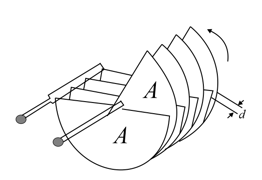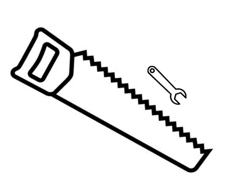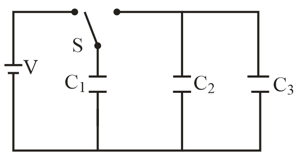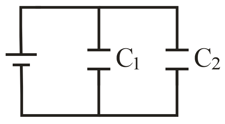Resnick & Halliday Solutions for Chapter: Capacitance, Exercise 1: Problems
Resnick & Halliday Physics Solutions for Exercise - Resnick & Halliday Solutions for Chapter: Capacitance, Exercise 1: Problems
Attempt the practice questions on Chapter 25: Capacitance, Exercise 1: Problems with hints and solutions to strengthen your understanding. Principles Of Physics International Student Version solutions are prepared by Experienced Embibe Experts.
Questions from Resnick & Halliday Solutions for Chapter: Capacitance, Exercise 1: Problems with Hints & Solutions
Figure shows a variable "air gap" capacitor for manual tuning. Alternate plates are connected together; one group of plates is fixed in position, and the other group is capable of rotation. Consider a capacitor of plates of alternating polarity, each plate having area and separated from adjacent plates by distance . What is the maximum capacitance of the device?

The space between the two concentric conducting spherical shells of radii and is filled with a substance of dielectric constant A potential difference is applied across the inner and outer shells. Determine (a) the capacitance of the device, (b) the free charge on the inner shell and (c) the charge induced along the surface of the inner shell.
You have two flat metal plates, each of area with which you have to construct a parallel-plate capacitor. (a) If the capacitance of the device is to be , what must be the separation between the plates? (b) Could this capacitor actually be constructed?
The two metal objects shown below have and charges and results in a potential difference between them. (a) What is the capacitance of the system? (b) If the charges are changed to and , what will happen to the capacitance? (c) What will happen to the potential difference?

In the Figure, and . Switch is first thrown to the left side until capacitor reaches equilibrium. Then the switch is thrown to the right. When equilibrium is reached again, how much charge is on capacitor

A capacitor is charged to a potential difference of after which the charging battery is disconnected. The capacitor is then connected in parallel with a second (initially uncharged) capacitor. If the potential difference across the first capacitor drops to what is the capacitance of this second capacitor?
The plates of a spherical capacitor have radii and (a) Calculate the capacitance. (b) What must be the plate area of a parallel-plate capacitor with the same plate separation and capacitance?
In figure two parallel-plate capacitors (with air between the plates) are connected to a battery. Capacitor has a a plate area of and an electric field (between its plates) of magnitude Capacitor has a plate area of and an electric field of magnitude. (a) What is the total charge on the two capacitors? (b) If the first plate area is cut in half, does the total charge increase, decrease, or remain the same?

